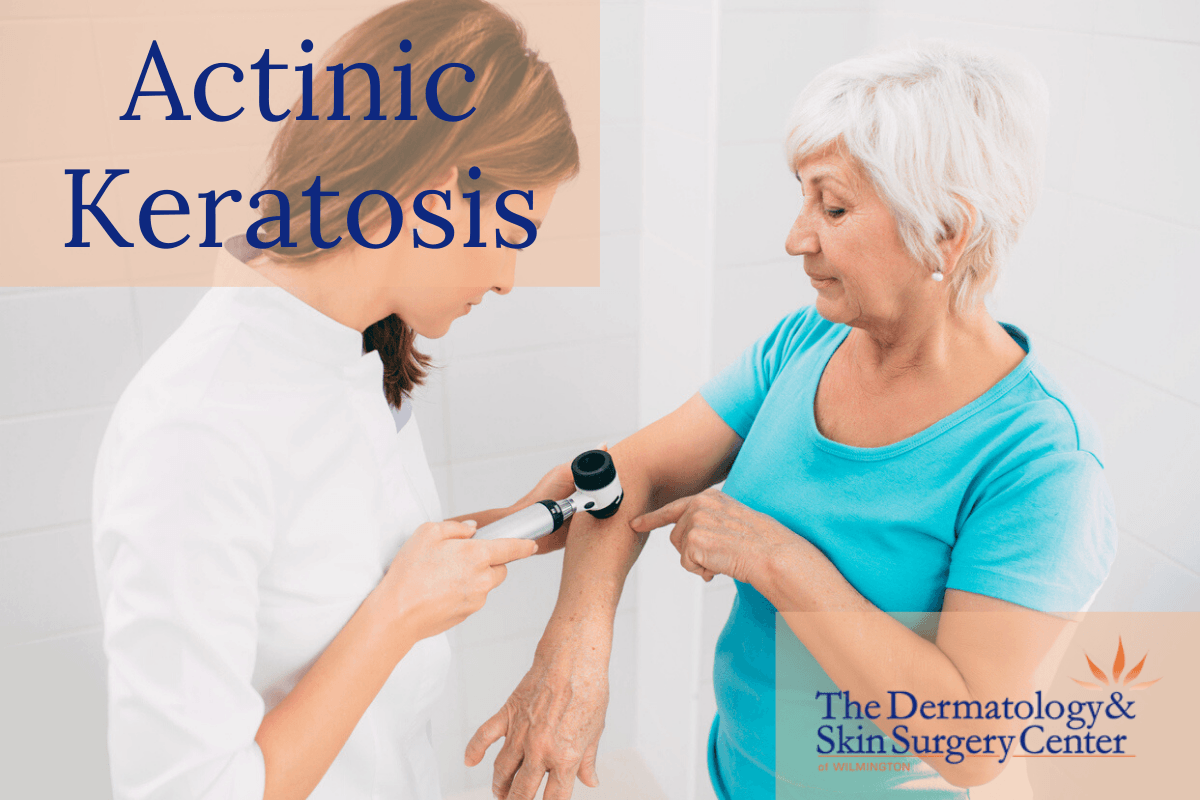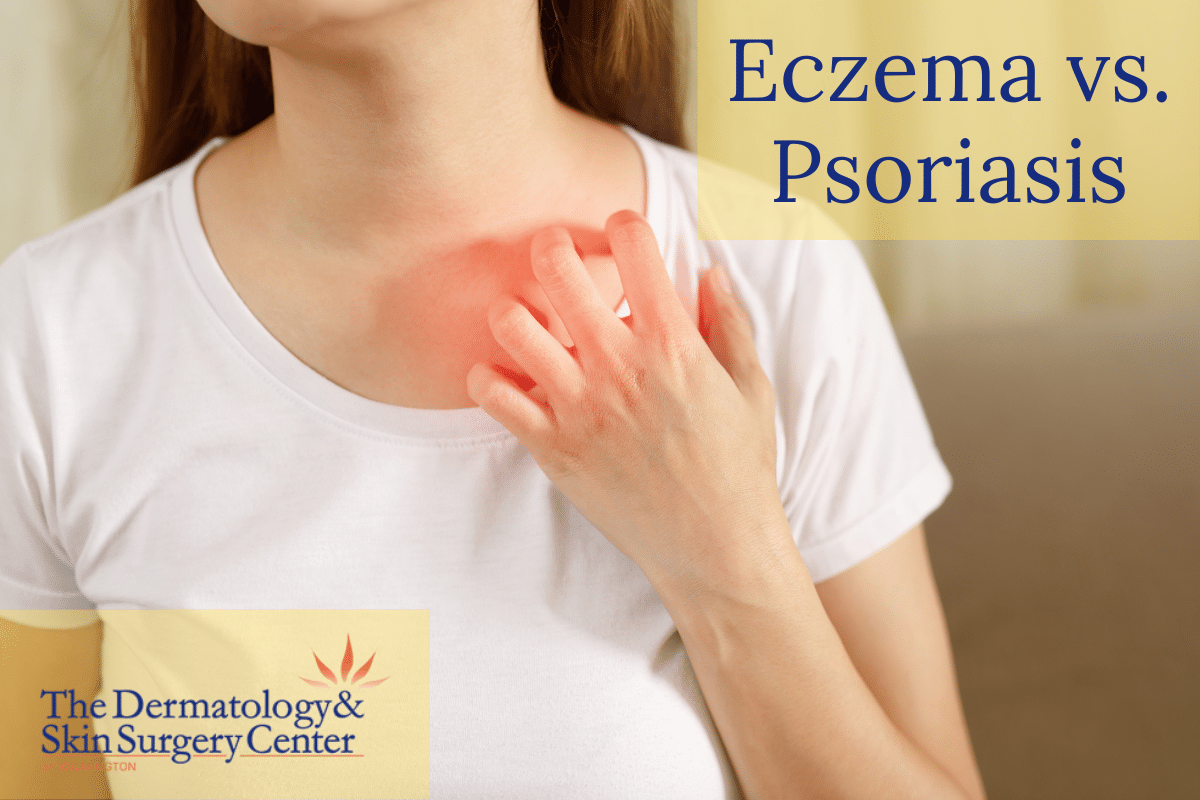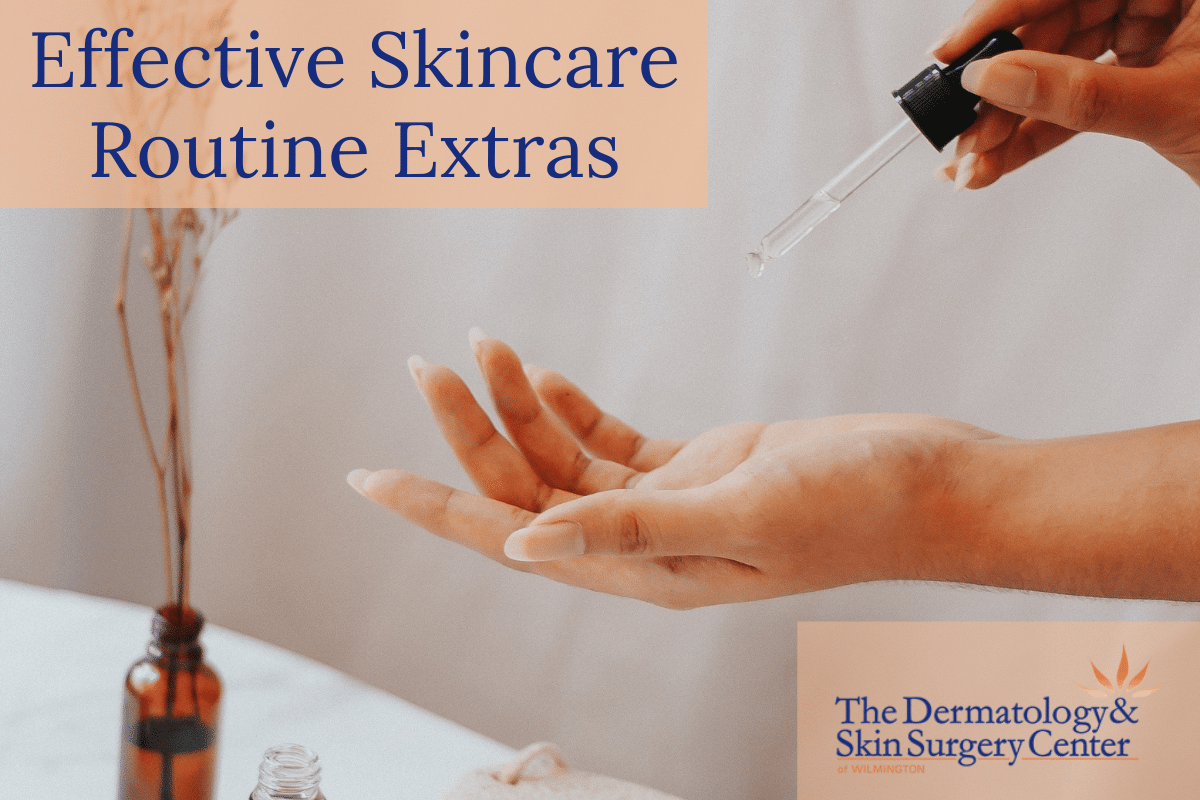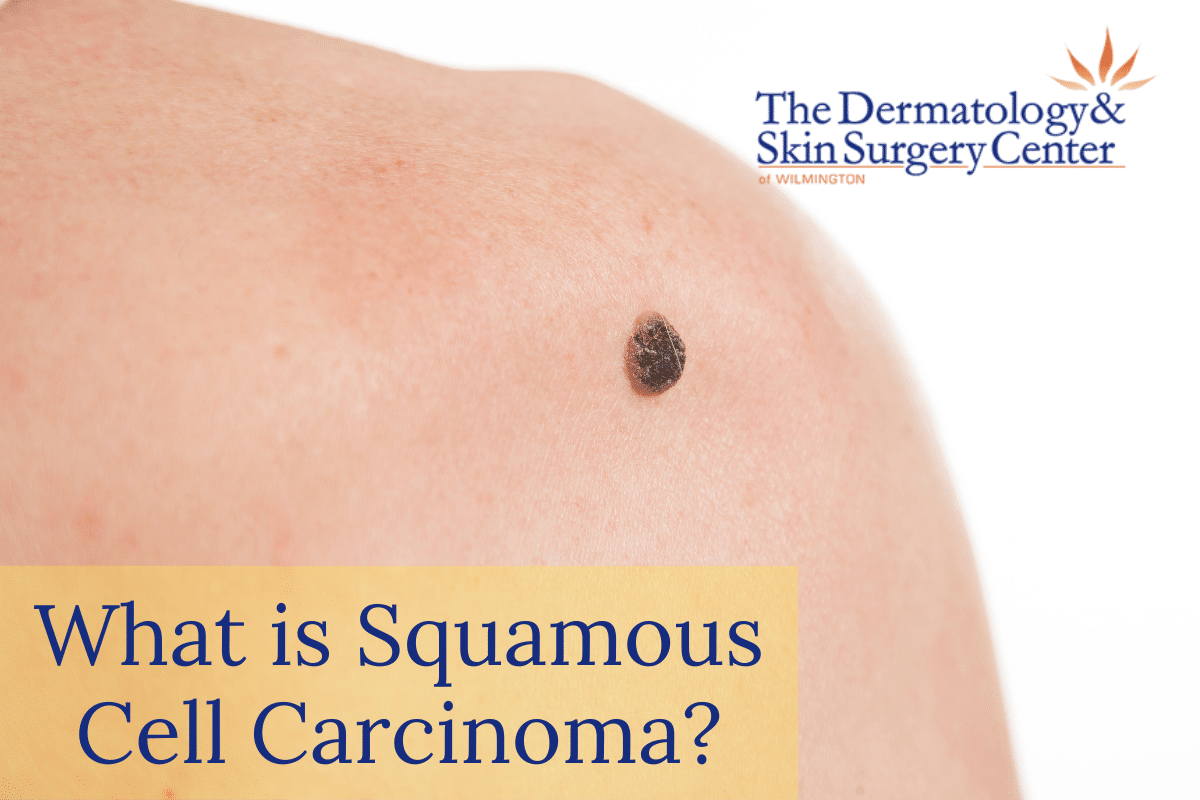At The Dermatology & Skin Surgery Center of Wilmington, we understand how hard it can…

Closer Look at Actinic Keratosis: What It Is, Warning Signs & How to Treat It
Do you have questions about an actinic keratosis? Also known as solar keratosis, actinic keratosis (AK) is the most common pre cancer dermatologists see today.
Though these skin lesions have a low chance of turning into skin cancer, AKs can progress into a squamous cell carcinoma (SCC). This is why it’s important to know more about actinic keratoses so you can identify them and have them treated before they become something more dangerous.
Below our expert dermatologists answer the most common questions about actinic keratoses, such as what they are, what causes them, signs and symptoms, how they are diagnosed, and the best actinic keratosis treatments available at the Dermatology and Skin Surgery Center of Wilmington.
Actinic Keratosis FAQs
Use our frequently asked questions guide below to better understand actinic keratosis and how to spot it early to protect your health from the small risk of it turning into skin cancer.
What is Actinic Keratosis?
Actinic keratosis (AK), also known as solar keratosis, is a pre cancer caused by excessive, unprotected exposure to ultraviolet (UV) rays, such as from the sun or tanning beds.
An actinic keratosis most often develops on sun-exposed areas on the body, like the face, lips, ears, scalp, shoulders, neck and the back of the hands and forearms.
What Causes Actinic Keratosis?
Actinic keratosis is primarily caused by long-term exposure to UV rays. Over time, this excessive UV light exposure damages cells in the skin called keratinocytes. These cells are found in the epidermis, otherwise known as the outermost layer of the skin.
What Does Actinic Keratosis Look Like?
If left untreated, an actinic keratosis can turn into a squamous cell carcinoma. This is why it’s important to know the signs and symptoms of actinic keratosis so you can detect it early and get it treated as quickly as possible.
Actinic keratosis can often look and feel like:
-
-
- Rough patch of skin that’s easier to feel, rather than see. (Sometimes it may feel like sandpaper.)
- Uneven, scaly bumps that may look like pimples or spots of irritated skin.
- Raised spots that may look like a rash.
- Patch of skin that may be rough and red, pink, skin-colored, or gray.
- Flat, scaly area that looks like an age spot.
- Scaly, white patches on one (or both) lips.
-
As mentioned above, it most often shows up on sun-exposed areas of the skin, like the scalp, face, ears, lips, neck, forearms, and back of hands.
Is Actinic Keratosis Cancer?
Actinic keratosis is a precancerous skin condition, which means the abnormal skin growth is benign. However, around 5-10% of AKs develop into a squamous cell carcinoma skin cancer. This is why it’s important to detect and treat actinic keratoses as soon as possible.
How is Actinic Keratosis Diagnosed?
Actinic keratosis has relatively distinct features and is one of the most common skin conditions diagnosed by dermatologists today. Thus, an experienced board-certified dermatologist can often diagnose AK simply by looking at the affected area.
What are the Best Actinic Keratosis Treatments?
The best treatment for actinic keratosis depends on a few factors, which your doctor or dermatologist will take into consideration. Factors such as:
-
-
- How many actinic keratosis spots you have.
- Where these spots are located.
- The severity of the AK.
- Whether or not you’ve previously had skin cancer.
- Any other medical conditions you may have.
-
At the Dermatology & Skin Surgery Center of Wilmington, we offer two effective actinic keratosis treatments.
-
-
- Topical Treatments: Gels, creams and topical solutions are effective for patients with widespread AKs. The topicals are applied directly to the skin to treat affected areas for varying lengths of time.
- Cryotherapy: Liquid nitrogen is applied directly to each individual lesion in order to destroy the precancerous cells.
-
Actinic Keratosis Treatment Follow-Up Care
Following an actinic keratosis treatment, it’s important to take extra care of the skin. This means staying out of direct sunlight (even if it’s cloudy) and being gentle with the skin (no harsh exfoliation or scrubbing) until the area is fully healed.
Additionally, after treatment it’s important to perform monthly self-exams of the skin and visit your dermatologist regularly to check for any other AKs, as well as skin cancer.
Actinic Keratosis Treatment at the Dermatology & Skin Surgery Center of Wilmington
At the Wilmington Dermatology & Skin Surgery Center, we offer several types of treatment for actinic keratoses, and our team of expert dermatologists are here to help. We’re passionate about skin health and offer top-of-the-line procedures to address a number of different skin conditions, including actinic keratoses.
Come see the skin experts at the Dermatology and Skin Surgery Center of Wilmington to create an individualized plan to heal your actinic keratosis today.
Get in touch with the Dermatology and Skin Surgery Center of Wilmington. Call us at (910) 782-0028 to schedule an actinic keratosis and skin consultation today.



